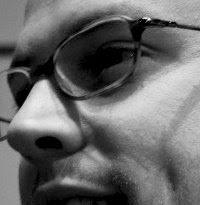Hello and welcome to my online journal focusing on the Great Master’s Materials and Techniques. This is actually a project for an art history class of the same name taught by Professor Lesa Mason at the Savannah College of Art and Design in Savannah, GA. Just so that we are all on the same page I am going to explain what the class is all about and what the focus of this journal will be about.
So what is Great Masters’ Materials and Techniques? The course description on the syllabus is probably a good place to start. It reads:
This course delves below the surface to explore the physical character of paintings, manuscripts and stained-glass windows by northern and southern Europena artists from 1100 to 1600. Antique treatises and recipe books regarding artist’ materials and techniques are studied. Emphasis is placed on how and with what artists created works of art, with recent results of the scientific examination of art providing substantial basis for insights. Conservation issues are also considered in light of new studies in this field.
So what does that mean? Basically, this class is all about learning how the great masters of the Renaissance created their works and what they used in their creation. For me personally I am more interested in the “how” than in the “what.” Learning how they created a composition and layout, their methods of drawing and rendering, perspective, how they took a little drawing and turned it into a giant fresco or sculpture. While I do find it interesting how they created pigments and charcoal the Industrial Revolution has done a fine job in making art supplies affordable and with relatively high quality. Therefore, the need to find the ingredients and follow the recipes to create one’s own pigment of burnt sienna I will leave to better more traditional artists.
In the tradition of scholarly journals, it behooves me to define some terms. I believe this tradition started with Euclid and his writings on geometry but I could be way off on that. So what are the important terms we should start off defining? Well obviously materials and techniques because their definitions are very important to the topic of this class. Let’s also define the term, process, because I am sure that we will no doubt come across different methods of making art in the investigations that are to come. Plus it was assigned that we define these terms as our first journal entry. Ha! I bet you thought I was being scholarly?
Materials are the substance or substances of which a thing is made or composed.[1] This definition seems pretty straightforward and for the most part the materials of art are pretty straight forward. However, there are always substances that aren’t well known or they are components of something more complex but their properties still effect artwork in a particular manner. This becomes very apparent when the issue of conservation comes up. To keep old pieces from deteriorating, historians and conservationists need to understand materials from different periods so as to treat them properly and slow the effects of age and environment.
Technique can be defined as the manner and ability with which an artist, writer, dancer, athlete or the like employs the technical skills of a particular art or field of endeavor.[2] I like this definition because I think it makes an important point about “techniques” in art and elsewhere. Techniques are something that are taught or learned in a specific manner yet allow the practitioner room for improvisation. Techniques in the world of art are numerous yet have many universal commonalities while at the same time contain nuances specific to the artist themselves. For example two artisst may use the same technique for rendering a drawing yet the type of stroke used, the angle and pressure of the stylus used, etc are unique to the artist. Look at drawing by two different artists that employ cross hatching and I guarantee that while they use the same technique they are applied in different ways.
Process is a systematic series of actions directed to some end.[3] Process as it relates to art is essentially following the steps of an artist in the creation of a work. Processes can be as variable as there are artists and craftsman. They may be very specific or very general. Yet process in my view is different from technique. While there are many different types of processes, process simply put is traveling from point A to point B. Process is not as nuanced or as individualistic as technique. Anyone can learn a process, yet it is the techniques used at each step of a process that an artists sets themselves apart.
This concludes the introduction, stay tuned as there will be more to follow.
[1] Materials. Dictionary.com. Dictionary.com Unabridged (v1.1). Random House, Inc. http://dictionary.reference.com/browse/materials (accessed: July 7, 2008).
[2] Technique. Dictionary.com. Dictionary.com Unabridged (v1.1). Random House, Inc. http://dictionary.reference.com/browse/technique (accessed: July 7, 2008).
[3] Process. Dictionary.com. Dictionary.com Unabridged(v1.1). Randomc House, Inc. http://dictioanry.reference.com/browse/process (accessed: July 7, 2008).
